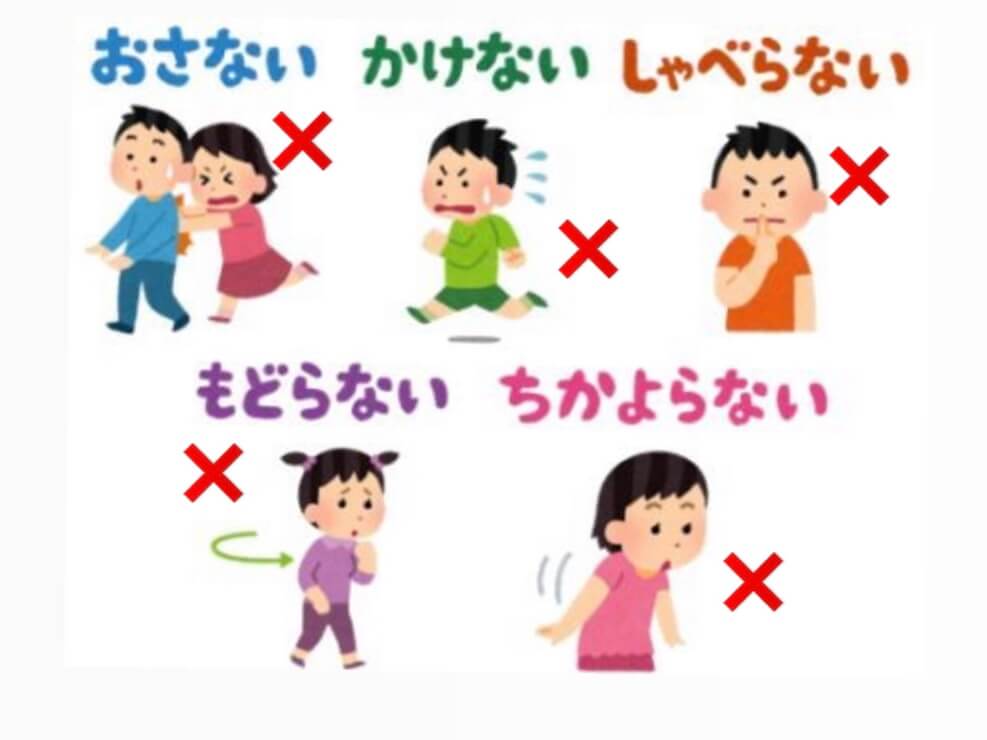Did you know Japan is a country with a lot of natural disasters such as earthquakes, and there are many tremors happening every single moment? Do you know what you should do in case of an emergency? Please finish reading this article so that you may stay and live safely in Japan, and can take immediate action calmly.
Main natural disasters in Japan
- Typhoons
- Landslides and rivers overflowing as a result of typhoons, which generally happens in August, September and October.
- Earthquakes
Learning from history
This year marks the 100th anniversary of the Great Kanto Earthquake in 1923.
It happened on September1st, which was estimated to be a magnitude of 7.9. The fire and earthquake occurred at the same time because it was around noon, lunch time, and it caused a lot of damage. Since then, the day has been known as Disaster Prevention Day. Japanese people reflect on the reality of disasters and the importance of preparation on this day. In addition, disaster preparation activities such as evacuation drills take place all over Japan, which are called “Hinan-kunren.”
What’s Hinan-kunren?

Hinan-kunren, known as an evacuation drill, takes place at schools, workplaces and in each region where we live. We have been preparing for emergencies which happen at any time by doing the drill since we were kids. Parents and schools work together, and on Disaster Prevention Day parents pick their kids up from school to simulate what would really happen in such an event.
Thanks to these simulations, people have developed habits to save their own lives quickly and the actions stick with us, for example hiding under tables, opening doors and windows in the case of earthquakes and closing them in the case of fire. Do you do the same in your hometown?
Besides that, we know the risks of secondary accidents, and can think on our feet about what to do next. Having said that, real situations differ from the preparation training, such as the time, place and season that it happens, and fires, typhoons and tsunamis may coincide with them as secondary accidents. Some parents may not be able to pick their kids up at school without advance notice. So, we need to cope with it depending on the circumstances, as you know.
Evacuation drill for kids ~Basic first actions~


You take the initials of five promises and memorize them as a watchword, “O-ka-shi-mo-chi.” This word is taught by teachers as an important basic rule word if an emergency happens.
お(o) か(ka) し(shi) も(mo) ち(chi)
If you combine the first three words, おかし, is a general term for snacks in Japanese, and the last two words, もち, means rice cake. Kids can remember it easily. Not only kids but also adults need to know the words and meanings. Of course, situations that fit this watchword vary from place to place. If you were at home, you would take different actions.
I will give additional explanations.
- し(Keep quiet) You need to be quiet to be able to listen to other information while you are escaping.
- も(Don’t go back) You shouldn’t go back the way you came because collapsing buildings may fall on you.
- ち(Keep away) Keep away from the buildings so as to avoid fire and collapsing structures.
Stay calm and take the next action referring to these rules.
The next action

Pictogram of shelters (Right)
First of all, you have to evacuate to a spacious area like a park or square called Hinanbasho. And once things settle down, please try to find a shelter. Shelters called hinanjo in Japanese are the indoor facilities where you can collect some information, receive some snacks and daily necessities, and stay temporarily. There are some public evacuation centers that are designated in advance, which are generally places such as public schools and community centers.
Though I’m going on a tangent, I’m proud of the culture in Japan where people wait to receive water and food in an orderly fashion, neatly and patiently without any big trouble as far as I know even if people are in serious circumstances.
The importance of stockpiles
My mom is a stockpile enthusiast, and has stored everything she came up with from before. For example, she has not only emergency food, water and daily necessities but also disposal toilets and smoke hood protectors. There are enough supplies stockpiled in order to save her life and the lives of neighbors living around her. Some people may think that they want to save only themselves, or other people say that storing something for a disaster isn’t worth doing because everyone will die when a catastrophe happens. I’m against the idea. If you ask me, generally speaking, it’s highly likely that people can survive, so, in order to survive, you should prepare a bare minimum amount of supplies. If I were there in such circumstances, I would join with others so we could help each other and get through the situation.


The map says, the darker the color is, the more possible it is that earthquakes will happen. However, looking back in the past 30 years, not only the green-colored prefectures but other places had earthquakes here and there all over Japan and the world. You’d be better off thinking it will happen anywhere.
I have let you know only basic matters, but please actively count on Japanese people in case you ever need help in Japan. I’ll make sure we help you and support each other. Stay safe and enjoy your stay in Japan.
Reference
Helpful Apps and Websites in the Event of Disaster
Safety tips (Free app download URL)
・Android:
https://play.google.com/store/apps/details?id=jp.co.rcsc.safetyTips.android
・iPhone:
https://itunes.apple.com/jp/app/safety-tips/id858357174?mt=8

I hope that information is helpful to you as some basic knowledge in case of emergency.
I live in Tokyo and am working at a pre-school. I’m a nature lover and enjoy experiencing the characteristics of each season. In addition, I like taking care of plants. My strength is improving myself and being able to think in a positive way.





 HTJ has a YouTube page! Check it out
HTJ has a YouTube page! Check it out
Hi, Hidemi san!
Thank you for reminding me of the importance of preparing for natural disasters.
I didn’t know the watchword “okashimochi”! I used to work at a nursing home in my 30’s and we had evacuation drills for fire and earthquake every year. “Okashimochi” is easy to remember also for elderly what not do in an emergency. I hope they know the watchword now!
Last but not least, I was very impressed by your heartwarming message in the last paragraph. I hope that Japan will be a country where everyone can trust each other.
Thank you for reading my article, Akiko san. I have a sense of serious crisis against The Great Earthquake. Japan has beautiful seasons and nature, and atracts many people from the world. I really hope people can feel peaceful and enjoy staying without any anxieties in this time and age.